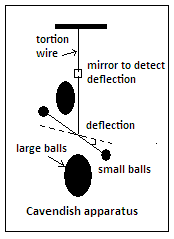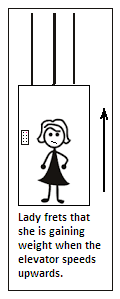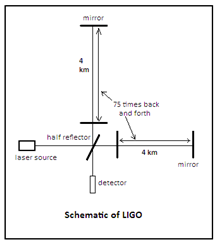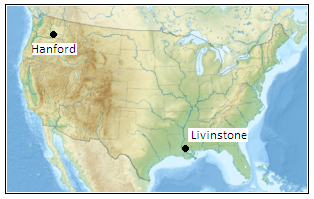Forces of gravity are either so feeble or so far away, they are difficult to measure, says S.Ananthanarayanan.
The week just past has seen the world in jubilation at the detection of gravitational waves. These waves were the prediction of theory hardly in doubt and the confirmation was mainly the culmination of increasing precision of the detection system. While the detection may hence be viewed as inevitable, what has been achieved, by the revamped Laser Interferometer Gravitaional-wave Observatory (LIGO arrangement, located at two ends of the US continent, is unprecedented measurement of a change, due to the fluctuation in gravity, of a length of just a billionth of a billionth of a billionth of a meter over a distance of four km!
The force of gravity itself presents great difficulty in being studied because it is so feeble. While all of us are aware of gravity, while we lift loads of drop things, this is only because we have a 6 thousand billion billion tonne earth exercising all its gravity right at our feet. But the force of gravity between two objects in our normal experience, or the change in the earth’s gravity even in the presence of a large mountain or at the bottom of the shaft of a mine, is difficult to detect. On the other hand, the gravity in black holes is so great that it keeps even light from emerging. But this is to no avail, as these objects are at such great distances.
The first formal, laboratory measurement of gravity was by Cavendish a hundred years after the laws of gravity had been formalised by Isaac Newton, in the 17th century. Cavendish performed a remarkably sensitive trial, for the time, of measuring the force of attraction of two larger lead balls on two smaller ones which were attached to a beam suspended by a thin wire. The objective was to compare the force with the weight of the balls, which was the force of the earth’s gravity, and hence compute the mass and density of the earth.

Newton’s main contribution was that massive bodies have ‘inertia’, or resistance to being moved by a force, more massive bodies showing more inertia. And then, there was the law of gravity, that massive bodies attracted each other, proportionate to the masses and inversely to the square of the distance. A little later, the question arose of whether the mass that gave rise to inertia was the same as what caused gravity, and this was answered by the experiment of Eötvös, 1906, where a pair of balls suspended from a torsion balance were subjected to both the inertial forces arising from the rotation of the earth and also the force of gravity.
The early work on detecting gravity due to isolated objects grew in sensitivity and found application in sounding the bottom of lakes, finding underground salt formations and even to help submarines sense the seafloor without using sonar, which would give them away. The actual constant of proportionality in the gravity formula is now known with great accuracy, but is both not a great improvement since the time of Cavendish and also somewhat uncertain even now.
Gravitational wave
Einstein first reformulated the concepts of length and time to account for the observation that light moved at the same speed regardless of any motion of the source or the observer. Einstein related measurement to the relative source/observer speed, and the speed of light, which led to the mass and energy being related by a factor of the square of the speed of light – the celebrated E = mc2 formula. As a sequel, Einstein examined the observation that the force of gravity is the same as the force felt when a body is accelerated, and the implications of this when related to the equivalence of mass and energy. The result was the discovery that the presence of a mass affected the nature of space and time and brought about curvature of space, which was perceived as acceleration, and hence as gravity.

The backdrop of these discoveries was that the properties of electrical charges and the magnetic effects of moving charges, which had the form of growing weaker with distance, like gravity, had been very elegantly formulated. It had also been shown that periodic movement of charges gave rise to periodic magnetic effects, which, in turn, gave rise to electrical effects, and so on, leading to the original charge losing energy by radiating electro-magnetic waves. Einstein hence went after a formulation of gravity along the lines of what had been done with electricity, with the difference, however, that gravitational force is only attractive and also that there is no equivalent of magnetism in gravity. But still, as the presence of a mass was seen as affecting the state of energy of the surrounding space, which would then affect the space further afield, the periodic movement of a mass also led to the spreading of a disturbance, in a wave-like way, with the moving mass gradually radiating and losing energy.
The effect of gravity, however, is so much feebler than those of electric charges, that the actual ‘curving’ of space and then of waves, is not detectable except when dealing with the masses of stars and galaxies. The curvature of space was verified in the celebrated experiment of Eddington, where stars that should have been hidden by the sun became visible when the glare of the sun was blocked in a solar eclipse. In the case of gravity waves, however, their amplitude becomes perceptible only with very fast acceleration of very large masses, which exist only at great distances, so that they grow weak and are scarcely detectable when they reach us
The LIGO arrangement
The way we detect feeble optical, infra-red or radio waves is with large, chemical or electronic collectors and amplifying systems. These collectors, however, do not respond to gravity waves, which manifest in the forms of ripples in the fabric of space. What this means is that there would be minute, and this is really minute, changes in distances between points in space as the wave passes though. Fortunately, we do have means of measuring changes in distances, using a measuring scale of the dimensions of the wavelength of light.The interferometer is such an instrument, which splits a beam of light into two at a partially reflecting surface, as shown in the picture. The two halves of the beam then traverse the two arms of the arrangement before they recombine, to be viewed through the telescope. These two halves now behave like the waves at the seaside, where returning waves meet the next set of incoming waves. We may have noticed that the waves some times meet with both crests together, when they get amplified, or, if a crest meets a trough, they are extinguished. The two halves of the light beam in the interferometer similarly rejoin, at the same stage of wave motion or otherwise, depending on the distance they traverse along the two arms, and this is sensitive at the level of the wavelength of light.

The LIGO has two arms, encased in high vacuum tubes that are 4 km long and the laser beam that is used goes back and forth 75 times, or a distance of 600 km before recombining. The mirrors are adjusted so that the two beams extinguish and the field is normally dark. Now, if a gravity wave is to pass through, it would alter the distance of the arms and cause a rise and fall in the length, which would cause the field of view to grow bright and dark at the frequency of the wave!
Now, as the change in distance that is to be detected is so exceedingly small, there has to be a way of knowing that any fluttering of the light is not due to vibrations in any part of the 4 km arms or the detectors. To take care of this, apart from the best insulation from vibrations, LIGO consists of two identical arrangements, one at Hanford, near the west coast of the US and the other at Livingstone, three thousand km to the south-east. Now, an event is counted only if it takes place at both the sites, separated by the 10 milliseconds that the wave takes to cover the distance. As it is highly unlikely that there would be chance disturbances that caused a signal at both sites at the same time, this makes sure that false alarms are discarded.

LIGO was first set up in 1992, with hundreds of scientists the world over collaborating. Time of thousands of computers was also drafted for continuously monitoring the signals recorded at the two sites. No results were recorded till 2011, after which LIGO went in for overhaul and enhancement. It may be fortunate that as soon as it was back in action in mid Sep 2015, it was able to record a series of events that were matched at the two sites, and have been attributed to the spiraling and coming together, a 350 km orbit, over 100 times a second, at nearly the speed of light, of two black holes, each over 30 times the mass of the sun, and a billion light years away.
Black holes, by definition, emit no light and cannot be observed. To detect gravity waves that mark interaction of these bodies is hence to see directly what was so far only inferred. Gravity waves are also the means to observe events so ancient and so far that no other signals can survive the distance, maybe the earlifist split seconds of the Big Bang, which was opaque to other radiation!
------------------------------------------------------------------------------------------